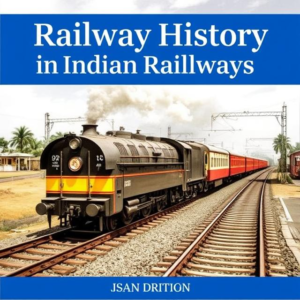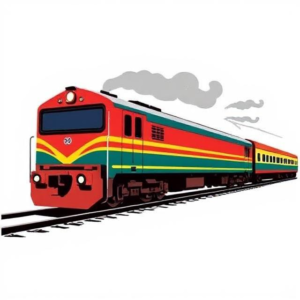Indian Railways has a long and fascinating history, full of significant milestones. Here’s a simple breakdown of the key events and progress in the development of the rail system in India:
1. The Beginning of Railways in India (1853)
- First Train Journey: The first passenger train in India ran on 16th April 1853 between Mumbai (then Bombay) and Thane, covering a distance of 34 kilometers. It had 14 carriages and was pulled by three steam engines.
- This marked the beginning of the railway era in India.
2. Expansion Across the Country (1850s–1900s)
- By 1857, the railway network started expanding to other parts of India, connecting cities like Kolkata and Chennai.
- By 1880, the railways had covered much of the Indian subcontinent, reaching north to Delhi and south to Madras (now Chennai).
- The railways were essential for trade, communication, and mobility, helping to unify India.
3. Introduction of Electrification (1900s)
- The introduction of electric trains in the early 20th century marked a major technological advancement. The first electrified train line ran between Mumbai and Pune in 1925.

4. The Golden Era of Railways (1947-1950s)
- Post-independence in 1947, India’s railways were vital in rebuilding the nation. Many old British-era stations and routes were upgraded.
- The Indian Railways (IR) was nationalized, and the government took control of all railway lines.
- The luxury trains like Maharajas’ Express were introduced, showing the grandeur and modernity of Indian Railways.
5. Modernization & Development (1960s–1980s)
- The introduction of diesel engines in the 1960s replaced steam engines, making trains more efficient and faster.
- High-speed trains were introduced, and new technologies like electronic signaling started being used to improve safety and reliability.
- In the 1980s, computerized ticketing systems and more efficient train operations were introduced.
6. First Bullet Train Proposal (2000s)
- In the 2000s, the idea of introducing bullet trains (superfast trains) in India gained momentum. Japan and other countries offered to help in developing this high-speed rail network.
- The Mumbai-Ahmedabad corridor is set to be the first bullet train project in India.
7. Introduction of New Technology & Fast Trains (2010s)
- The Rajdhani Express and Shatabdi Express became more modernized, with better facilities and faster speeds.
- The Tejas Express, India’s first semi-high-speed, fully air-conditioned train, was launched in 2017.
- The Make in India initiative led to the development of Vande Bharat Express, India’s first indigenous semi-high-speed train, which was launched in 2019.
8. Digital and Modern Train Services (2020s)
- The Railways now offer Wi-Fi, online booking, and real-time train tracking.
- The government has been pushing for eco-friendly trains powered by solar energy and electric traction.
- Dedicated freight corridors for transporting goods have been created, improving efficiency.
9. The Future (Present and Beyond)
- The Indian government is focusing on making rail travel faster, greener, and more comfortable with new innovations.
- Projects like the Mumbai-Ahmedabad bullet train and semi-high-speed corridors are aimed at reducing travel time and enhancing connectivity across the country.
Key Facts:
- Indian Railways is one of the largest rail networks in the world, with over 67,000 kilometers of track.
- It transports more than 23 million passengers daily, making it a vital part of the Indian economy and culture.
In summary, Indian Railways has evolved from a small, colonial-era network into a modern, massive system that plays an essential role in the country’s transportation and economy. The future of Indian Railways looks bright, with high-speed trains, new technologies, and sustainability initiatives on the horizon.
Keywords: Indian Railway, Railway











